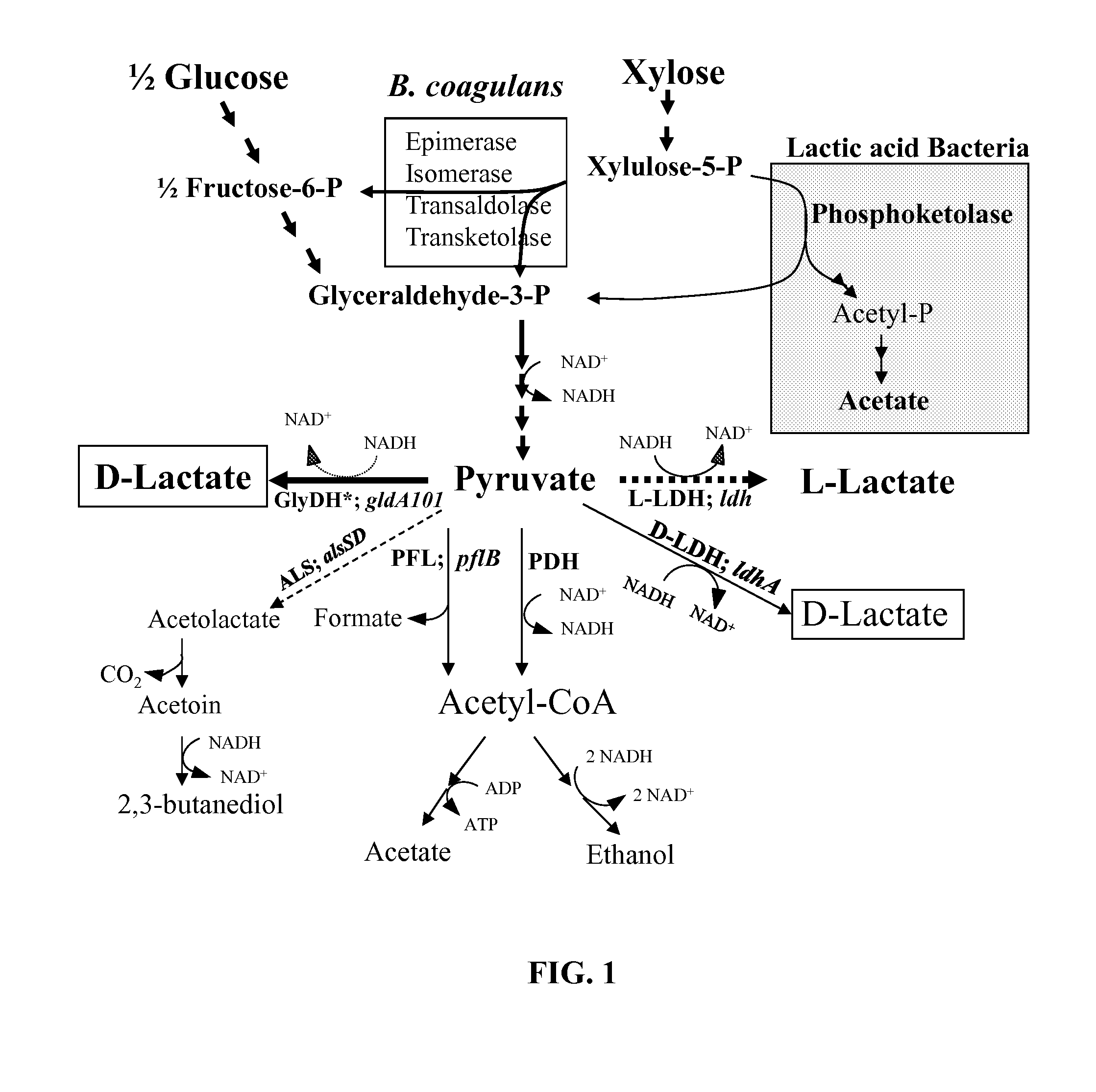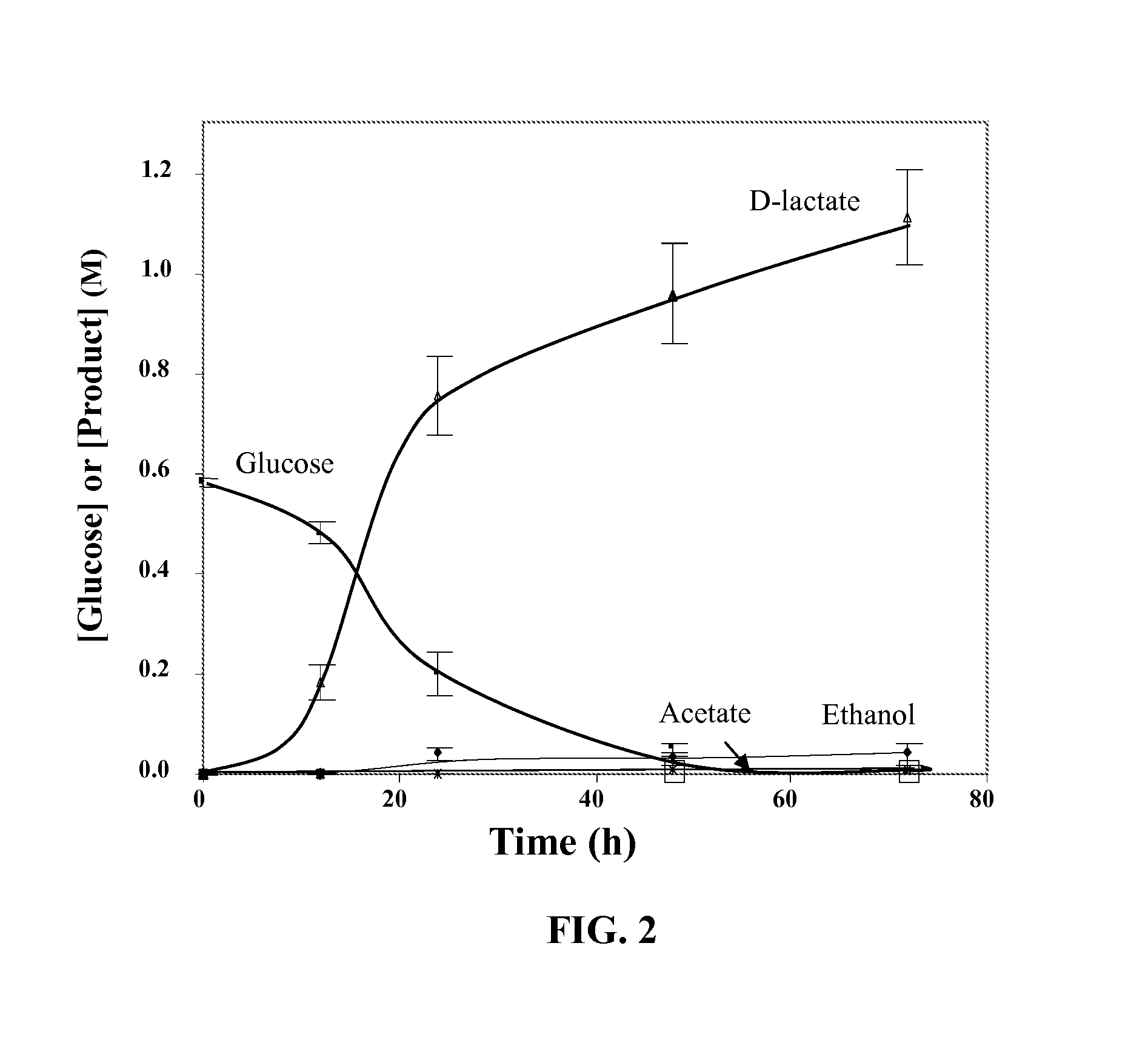Variants of glycerol dehydrogenase having d-lactate dehydrogenase activity and uses thereof
a technology of glycerol dehydrogenase and d-lactate dehydrogenase, which is applied in the field of glycerol dehydrogenase having d-lactate dehydrogenase activity, can solve the problems of preventing the efficient conversion of these sugars to lactic acid, affecting the efficiency of xylose fermentation, and affecting the ability of lactic acid bacteria to grow and function,
- Summary
- Abstract
- Description
- Claims
- Application Information
AI Technical Summary
Benefits of technology
Problems solved by technology
Method used
Image
Examples
example 1
Materials and Methods
Bacterial Strains and Plasmids
[0056]Bacterial strains, plasmids and primers used in this study are listed in Tables 3 and 4. B. coagulans strain P4-102B used as the wild type strain was described previously (17). Plasmid pGK12 replicates in several Gram-positive bacteria and E. coli (30, 31) and its replication is naturally restricted to temperatures ≦42° C. This temperature sensitive nature of plasmid pGK12 replication at 50° C. provides an opportunity to select for chromosomal DNA integrants of B. coagulans that can grow at 50-55° C.
Medium and Growth Condition
[0057]Growth and fermentation conditions have been described previously (15, 21-23). Cultures were grown in L-broth (LB) at pH 5.0 or 7.0, as needed. Sterile glucose was added before inoculation.
Gene Deletions in B. coagulans
[0058]Construction of deletion mutants of B. coagulans was based on previously described methods (32). Plasmid pGK12 was used as the primary vehicle for transfer of DNA to B. coagula...
PUM
| Property | Measurement | Unit |
|---|---|---|
| Acidity | aaaaa | aaaaa |
Abstract
Description
Claims
Application Information
 Login to View More
Login to View More - R&D
- Intellectual Property
- Life Sciences
- Materials
- Tech Scout
- Unparalleled Data Quality
- Higher Quality Content
- 60% Fewer Hallucinations
Browse by: Latest US Patents, China's latest patents, Technical Efficacy Thesaurus, Application Domain, Technology Topic, Popular Technical Reports.
© 2025 PatSnap. All rights reserved.Legal|Privacy policy|Modern Slavery Act Transparency Statement|Sitemap|About US| Contact US: help@patsnap.com



